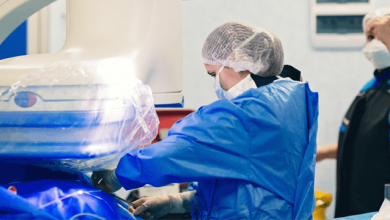Search results
BIO-RESORT: 5Y Outcomes
Author(s):
Eline H Ploumen
Added:
2 years ago
Video
Author(s):
Nikolaos Konstantinidis
,
Georgios Sianos
Added:
3 years ago
Coronary chronic total occlusions (CTOs) are identified in up to one-third of all patients referred for diagnostic coronary angiography,1 with an incidence increasing with age.2 CTOs still represent the most technically challenging lesion subset that interventional cardiologists face. The benefits of successful CTO recanalisation are related to improved survival,3,4 most notably in patients with…
View more
Author(s):
Thomas Pilgrim
Added:
5 years ago
Dr Thomas Pilgrim (University of Bern, CH) discusses BIOSCIENCE -Randomized comparison of an ultrathin cobaltchromium biodegradable polymer sirolimus-eluting stent with a thin strut durable polymer everolimus-eluting stent for PCI.
Filmed by Radcliffe Cardiology on site at ESC 2018, Munich.
View more
Dedicated Bifurcation Drug-eluting Stent BiOSS® – A Novel Device for Coronary Bifurcation Treatment
Author(s):
Robert Gil
,
Dobrin Vassilev
,
Jacek Bil
Added:
3 years ago
Article
Author(s):
Nicolaus Reifart
,
Mariann Gyöngyösi
,
Karl-Eugen Hauptmann
,
et al
Added:
3 years ago
Coronary stent implantation is one of the most important developments in the field of percutaneous coronary revascularisation after the introduction of balloon angioplasty in 1977.1 The treatment of coronary artery disease (CAD) using a bare-metal stent (BMS) is considered effective; however, restenosis occurs in 15–35% of all cases, requiring repeated treatment.2–4 To overcome the restenosis…
View more
Author(s):
Kamal Chitkara
,
Anthony H Gershlick
Added:
3 years ago
First-generation Stents
Since drug-eluting stents (DES) received the CE mark in 2002 and the US Food and Drug Administration (FDA) approved the first DES in 2003, there has been a significant increase in the use of these devices. The advent of DES has revolutionised the field of interventional cardiology by having a major impact on patient care through their efficacy in reducing the need for…
View more
Author(s):
Marco Valgimigli
Added:
1 year ago
ESC Congress 22 — Prof Marco Valgimigli (Cardiocentro Ticino Foundation, CH) joins us to share the 15-month results from the MASTER DAPT trial (NCT03023020).
This randomised, multi-centre study compared abbreviated antiplatelet with prolonged antiplatelet regimen (aspirin and P2Y12i) aligned with current medical recommendation in high bleeding risk (HBR) patients who received biodegradable…
View more
Author(s):
Heinz Joachim Büttner
,
Masahisa Yamane
,
Nicolaus Reifart
,
et al
Added:
3 years ago
Introduction and Objectives
A symposium, chaired by Dr Heinz Joachim Büttner of Freiburg-Bad Krozingen (Germany) and Dr Masahisa Yamane of St Luke’s International Hospital (Tokyo, Japan) took place at EuroPCR, Paris on May 23rd, 2014. Its objectives were as follows: to learn how to improve the success of percutaneous intervention (PCI) in chronic total occlusion (CTO) by matching techniques to…
View more
ABSORB BVS Implantation in Bifurcation Lesions - Current Evidence and Practical Recommendations
Author(s):
Robin P Kraak
,
Maik J Grundeken
,
Robbert J de Winter
,
et al
Added:
3 years ago
Article
Author(s):
Katrina Mountfort
Added:
3 years ago
Proceedings of two satellite symposia held at EuroPCR, Paris in May 2015
Although the latest polymeric drug-eluting stents (DES) have enhanced percutaneous coronary intervention (PCI) procedures, a substantial proportion of patients requiring percutaneous transluminal coronary angiography (PTCA) is elderly with numerous different comorbidities. This population requires use of effective DES that…
View more














